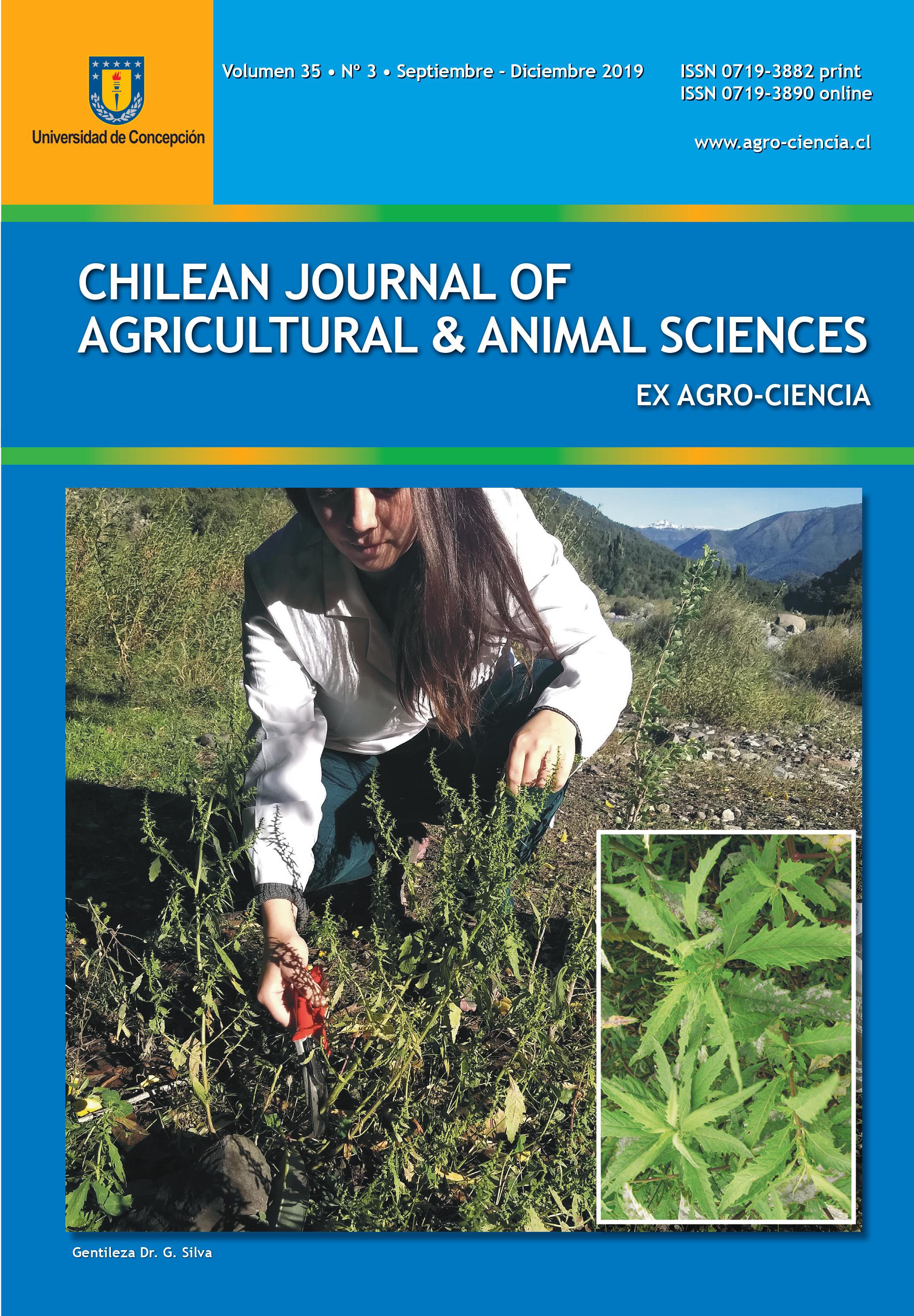RELATIONSHIP BETWEEN MILK SOLIDS YIELD EFFICIENCY AND POSTPARTUM BODY WEIGHT IN A PASTORAL DAIRY FARM IN CHILE
Resumen
In Chile, dairy industries pay for raw milk based on kg of milk solids (fat + protein). Productive efficiency can be defined as kg of milk solids per unit of land, and it is necessary to use biologically
efficient cows to achieve high productive efficiency. Productive efficiency was defined as kg of milk solids output per kg of cow metabolic postpartum body weight. Genetic and phenotypic correlations between productive efficiency and postpartum body weight were estimated. Data were obtained from a research farm in Los Lagos region of southern Chile. A bivariate mixed linear model was used to estimate (co)variance components of the traits. Heritability estimates for productive efficiency and postpartum body weight were 0.35 ± 0.05 y 0.33 ± 0.05, respectively. Genetic and phenotypic correlations between the same traits were -0.65 ± 0.09 and -0.70 ± 0.12, respectively. It is concluded that there exists additive genetic variation for productive efficiency, which can be used in genetic selection programs, and there is an undesirable association between postpartum body weight and productive efficiency.







